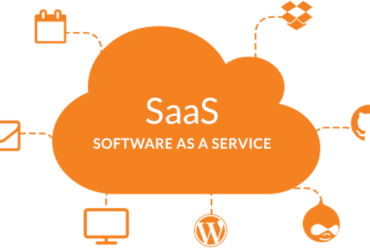Evolution of MOOCs

21 April 2020
Evolution of MOOCs
Massive Open Online Courses: While some may argue that the current model of educational instruction is antediluvian, the various aspects have in fact been in a perpetual state of change. In its earliest conception, education was only delivered as scattered modes of verbal instruction. It wasn’t until 2000 BC that this mode turned to scripted mode in the world’s first Phoenician writing system adopted by the Egyptians and Greeks. This was a point of transition that ultimately led to the establishment of the organized modes of instructional teaching for religious and trade skills for only some constituents of the privileged class. This mushroomed with ever greater complexity and advancement into the contemporary model of education that we have today. At every step of the way, from exclusivity to inclusiveness and from writing on parchment to the arrival of modern student information systems, the industry has evolved with ever greater advancement and complexity.
For some, the introduction of MOOC is the next phase of this transition. Coined by Dave Cormier in 2008, the term refers to the ‘Massive Open Online Courses’ that are the new wave of interactive education available online, with the promise of unlimited participation and open access via web.
With exponential increase in the number of people with access to the internet, and cheap availability of electronic media devices, MOOC’s set forth the potential to radically transform the educational landscape. It envisioned the potential for mass dispersion never fathomed before. In addition, its popularity was fueled by Daniel Barwick’s famous research that class size and learning outcomes seem to have no significant connection. Thus, MOOCs became the most widely researched development in distance education.
When the first Massive Open Online Courses emerged from Open Educational Resources (OER) movement, education providers were quick to jump on the bandwagon. The Yale open courses started in 2007, Udemy in 2010, Udacity & Coursera 2011 and EDX in 2012. When Stanford launched its MOOC, “Introduction to AI” in 2011, the enrollment reached 160,000. The fervor had reached the point that the New York Times termed 2012, as “the year of the MOOC”. By 2019, more than 900 universities had launched or announced 13,500 MOOC’s.
While the phenomenal increase in MOOC is noteworthy, the enrollment numbers haven’t kept up. Aggregate number of students in MOOC stood at 35 million in 2015, increasing to 58 million in 2016, 78 million in 2017, 101 million in 2018 and 110 million in 2019. Although, this represents a substantial increase, the pace of growth has been slowing down over the years to the point that the claim of radical transformation of the old system of education seems unfounded. This is in addition to the fact that very few students actually seem to complete the course. A research study by Jordan reported that only 15% completed the course they initially enrolled in while data from Coursera suggests this number to be as low as 7%.
Despite being seemingly low, the drop out and attrition rate is not a good indicator of MOOC success. Completion rates do not reflect the overall view that most students take classes with different perspectives and purpose in mind. A research by Khe Foon Hew indicates that students taking MOOC are likely to drop out soon if the course does not satisfy their purpose. At the same time, more are likely to drop out if the environment seems less supportive or the content less engaging. This has put pressure on developers to create more effective learning content.
MOOC have been advertised to students, educators and administrator at large as free of cost when in fact, they incur substantial cost. Most MOOCs have been subsidized by universities and venture capitalist, while some even claim to be losing money. MOOCs incur substantial development and maintenance cost that most have been unaware of. This coupled with the fact that new enrollments have been in a downward spiral depict that the public at large have been lounging in a honeymoon period. Thus, while MOOC might seem scalable, it’s ability to be a sustainable education model with the current fervor seems a fallacy.
Despite this slowdown in growth of new users, MOOC is still seeing an increasing number of new platforms, offering ever more diversity of courses and unique methods of teaching. Another startling trend is the increase in fee paying students to these platforms, paving the way for MOOC to becoming a sustainable model not relying on corporate subsidies.
Many view MOOC as a technological panacea to the problems facing higher education for both students and institutions alike. In a 2013 study of Inside Higher Ed Survey, nearly half of respondent of College and University Chief Academic Officers felt strongly that MOOC’s could overturn the business models of their institutions.
In order to gauge the potential roadmap of Massive Open Online Courses, it’s pertinent to understand market dynamics of the industry. The education industry currently operates in perfect competition, wherein a large number of education providers deliver a homogenous service. The scope of innovation is limited since providers make minimal profits. This is in contrast to MOOC platforms which operate in an oligopoly, with small number of firms but with potential to make abnormal profits, thus paving the way for rapid innovation in development and teaching of course work. So far, the number of MOOC platforms have not exceeded 10, with each new platform and course bringing in a new perspective to teaching methodologies. It is therefore hard to deny that MOOC would substantially alter the current education industry.









